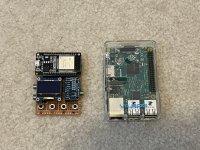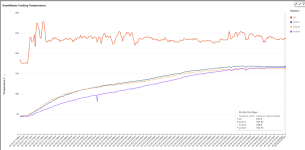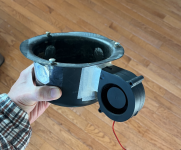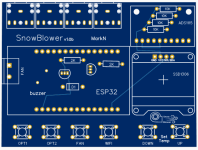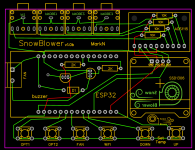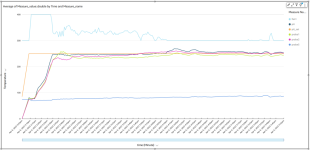Hello everyone,
I just built a fun DIY temperature control system and would love your feedback to improve it. It's usable, but I'm wondering what other features I should add? Here are my capabilities so far. What would you add/change that would make a noticeable difference in results? I like the current simple design so hopefully I'm not missing anything major.
1. Supports WiFi.
2. Supports pit temp and 3 meat probes (4 total).
3. Has a web server that can be accessed via computer or smartphone. Can only access if you have IP reachability (like within your home or if you have a VPN). Cannot access over the Internet (unless you VPN) however you can view the live temp graphs over the Internet (see #7).
4. Automatically controls a blower fan based on temp setting. Using a 11CFM 5V blower fan. On/off, not variable speed.
5. Can change desired temp using buttons or via website.
6. Can set alarm temps for each of the probes.
7. Is Cloud connected. All data is sent via MQTT to AWS IoT Core to a Timestream database. Allows me to graph all cooks. Can compare cooks. Can have multiple units sending data at the same time to the database (in case I want to have multiple cookers at the same time). Data is stored in the cloud for 10years.
8. Has a button to turn on/off WiFi.
9. Has a button to turn on/off the blower.
10. Has an audible alarm and a button to silence the alarm.
11. Low power consumption. At peak, with WiFi and blower going, consumes about 3W. I can power this all night using a USB battery pack (10,000mAh). Connects using a micro-USB connection and operates at 5V.
12. Low cost. About $20 to make one not including probes or blower. The probes are $13.20 for a pair on Amazon if you don't already have your own. The blower I bought was $5.30 on Amazon. AWS IoT Core is $0.08 per million minutes of connection and $1 per million messages. AWS Timestream is $0.50 for 1 million writes. Basically each cook cost about $0.01 to send the data and $0.01 each time I want to download the data.
13. Compact design. The PCB is 85mm x 80mm.
14. Uses an ESP32 micro-controller (built-in WiFi and Bluetooth and lots of GPIOs) which you can get on Amazon (3 for $18 shipped). Very impressed with thing.
Feedback welcomed. Thanks!
I just built a fun DIY temperature control system and would love your feedback to improve it. It's usable, but I'm wondering what other features I should add? Here are my capabilities so far. What would you add/change that would make a noticeable difference in results? I like the current simple design so hopefully I'm not missing anything major.
1. Supports WiFi.
2. Supports pit temp and 3 meat probes (4 total).
3. Has a web server that can be accessed via computer or smartphone. Can only access if you have IP reachability (like within your home or if you have a VPN). Cannot access over the Internet (unless you VPN) however you can view the live temp graphs over the Internet (see #7).
4. Automatically controls a blower fan based on temp setting. Using a 11CFM 5V blower fan. On/off, not variable speed.
5. Can change desired temp using buttons or via website.
6. Can set alarm temps for each of the probes.
7. Is Cloud connected. All data is sent via MQTT to AWS IoT Core to a Timestream database. Allows me to graph all cooks. Can compare cooks. Can have multiple units sending data at the same time to the database (in case I want to have multiple cookers at the same time). Data is stored in the cloud for 10years.
8. Has a button to turn on/off WiFi.
9. Has a button to turn on/off the blower.
10. Has an audible alarm and a button to silence the alarm.
11. Low power consumption. At peak, with WiFi and blower going, consumes about 3W. I can power this all night using a USB battery pack (10,000mAh). Connects using a micro-USB connection and operates at 5V.
12. Low cost. About $20 to make one not including probes or blower. The probes are $13.20 for a pair on Amazon if you don't already have your own. The blower I bought was $5.30 on Amazon. AWS IoT Core is $0.08 per million minutes of connection and $1 per million messages. AWS Timestream is $0.50 for 1 million writes. Basically each cook cost about $0.01 to send the data and $0.01 each time I want to download the data.
13. Compact design. The PCB is 85mm x 80mm.
14. Uses an ESP32 micro-controller (built-in WiFi and Bluetooth and lots of GPIOs) which you can get on Amazon (3 for $18 shipped). Very impressed with thing.
Feedback welcomed. Thanks!

